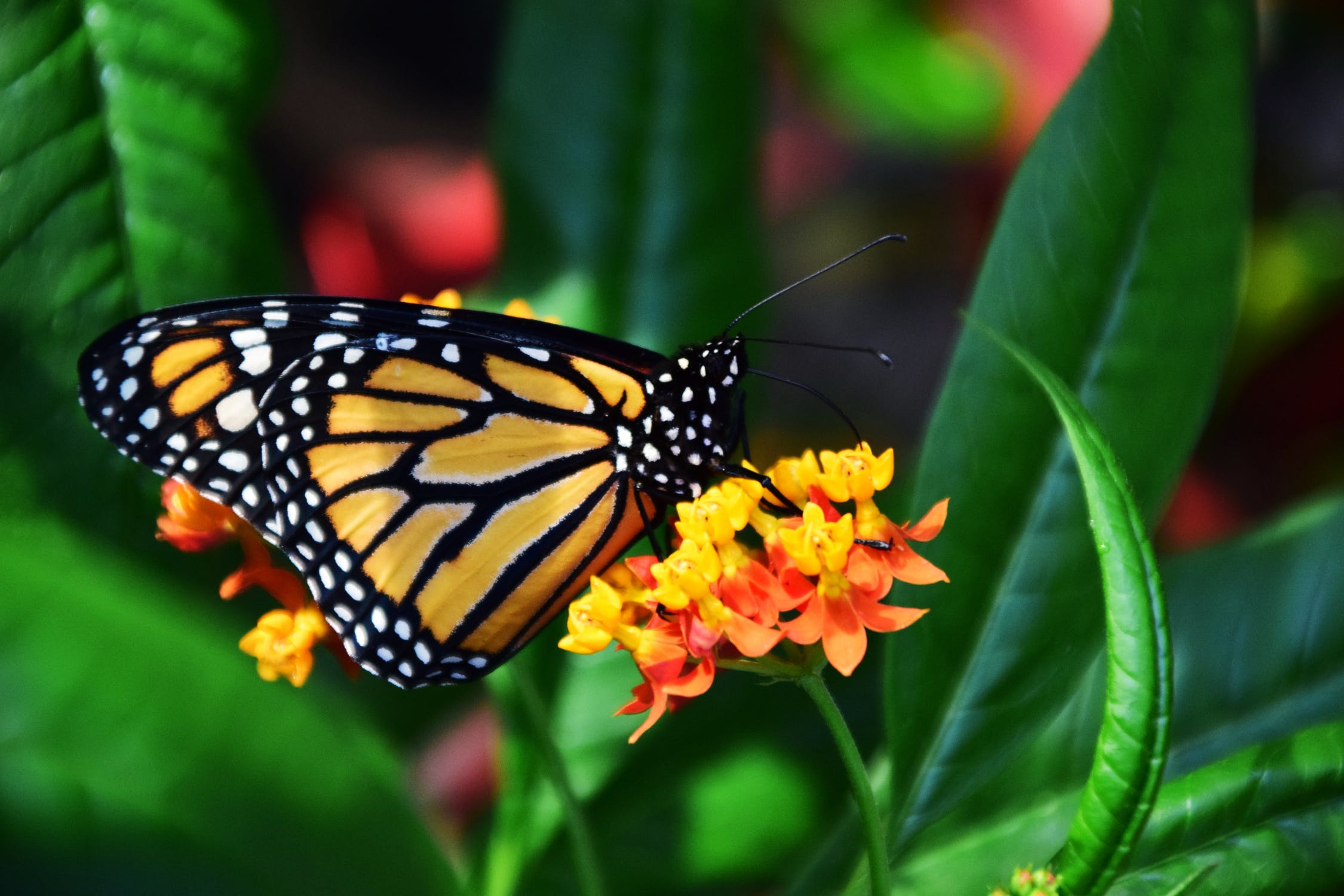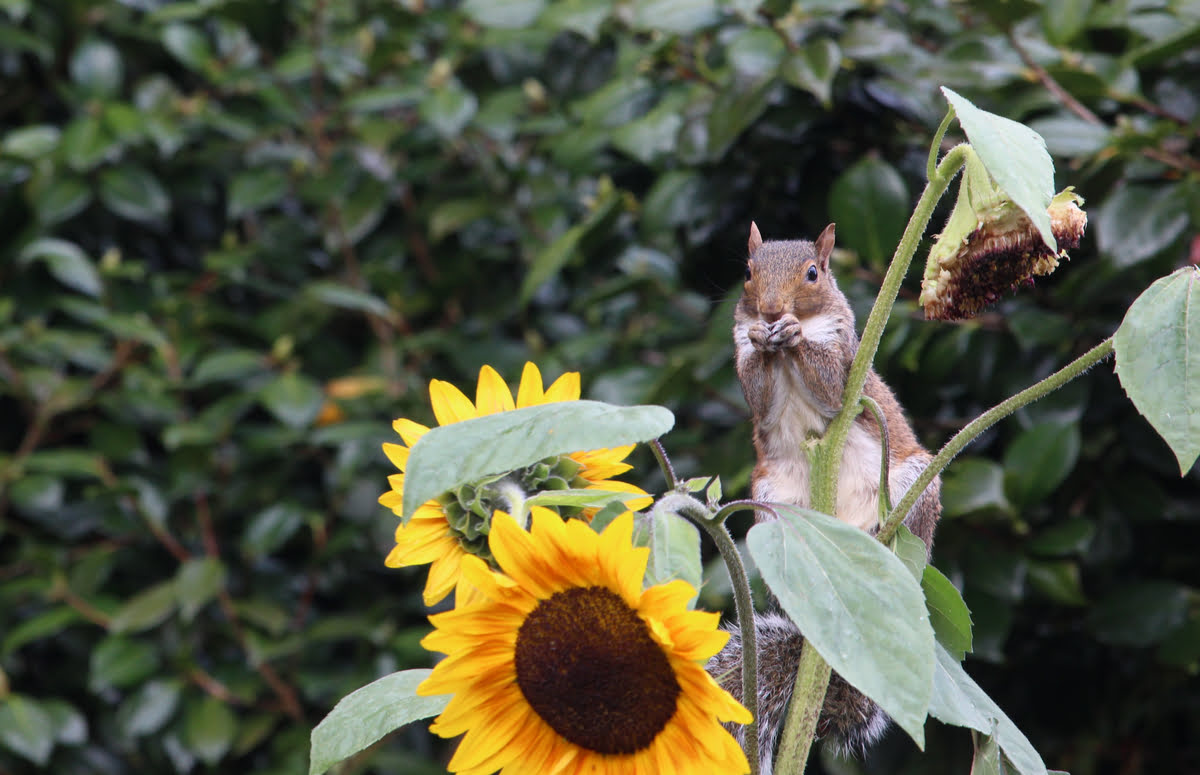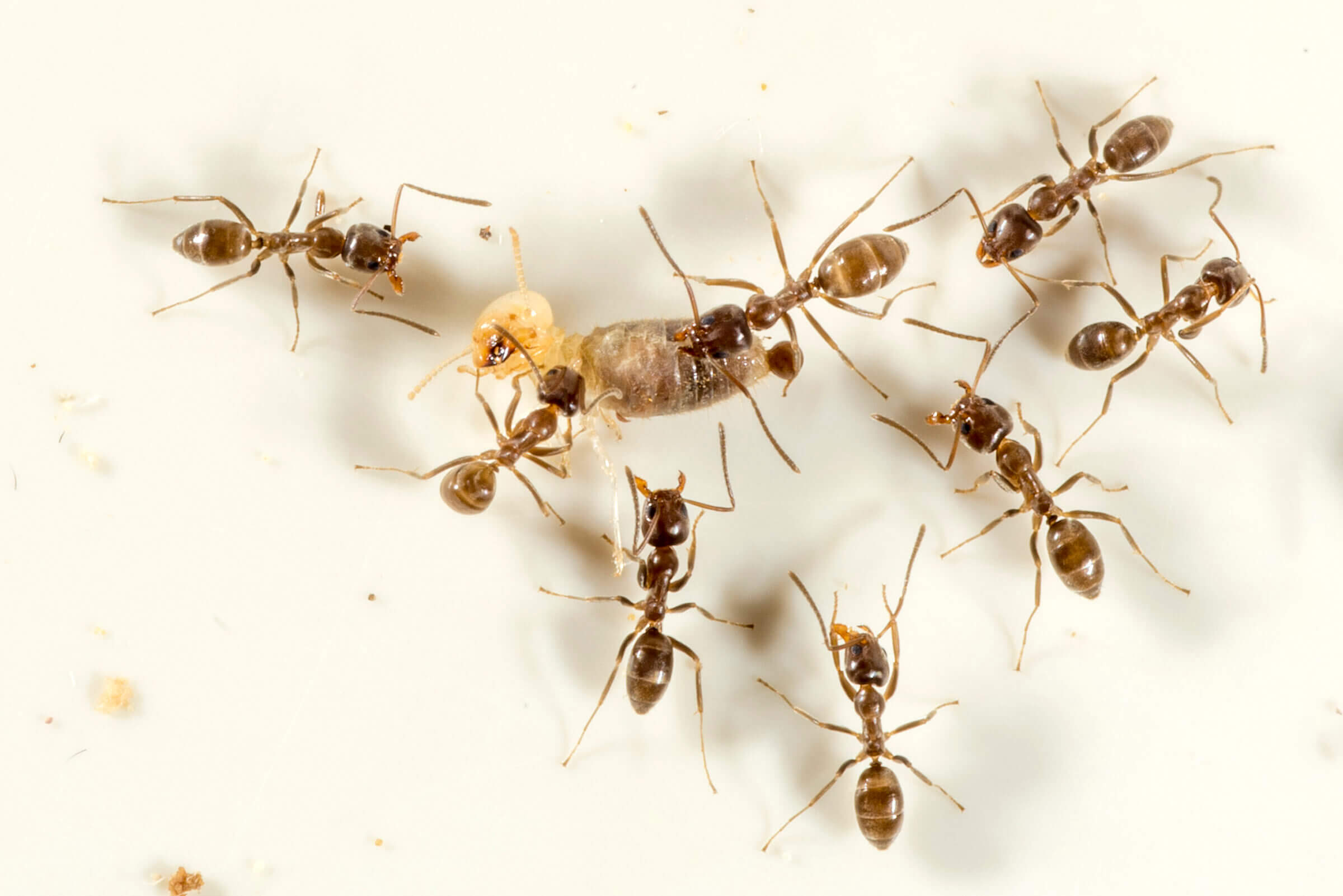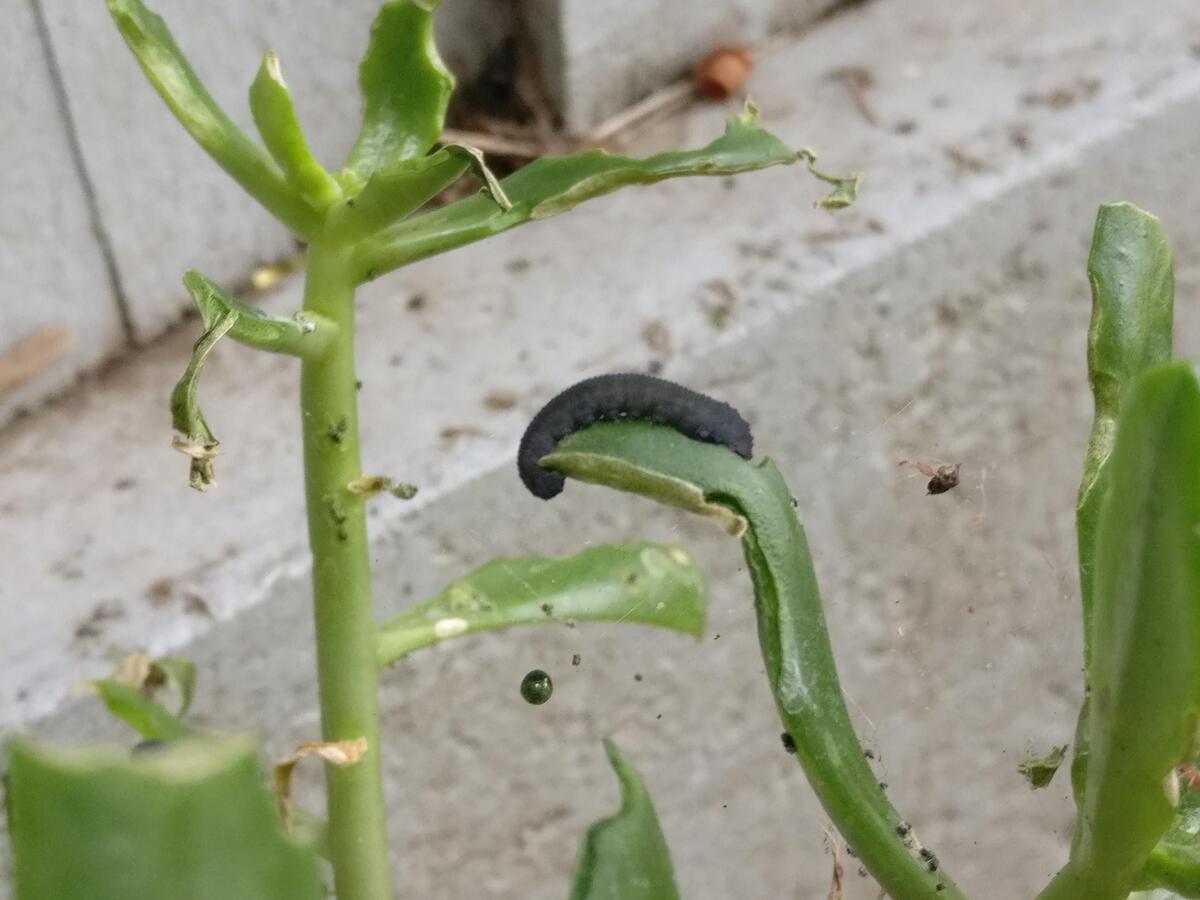Home>Types of Gardening>Ornamental Gardening>What Eat Shrubs


Ornamental Gardening
What Eat Shrubs
Published: October 18, 2023
Discover the secrets of ornamental gardening with our comprehensive guide on what to eat shrubs. Create a stunning landscape with these beautiful plants and enhance your garden today!
(Many of the links in this article redirect to a specific reviewed product. Your purchase of these products through affiliate links helps to generate commission for Chicagolandgardening.com, at no extra cost. Learn more)
Table of Contents
Introduction
Welcome to the fascinating world of ornamental gardening, where the beauty and creativity of nature know no bounds! If you have an appreciation for stunning landscapes and a passion for plants, then ornamental gardening is the perfect endeavor for you. By incorporating a wide variety of shrubs into your garden, you can create an enchanting and visually pleasing space that will leave everyone in awe.
Shrubs are an integral part of any garden. They add structure, color, and texture, serving as the backbone of the overall design. With their diverse range of shapes, sizes, and foliage, shrubs offer endless possibilities for creating an aesthetically pleasing garden that reflects your unique personality and style.
Whether you are a beginner or a seasoned gardener, ornamental shrubs provide countless benefits that go beyond their decorative appeal. They offer habitat and food for wildlife, enhance soil health, and contribute to the overall ecosystem balance. Moreover, some shrubs produce beautiful flowers, while others bear fruit or provide fragrant foliage, adding an extra dimension to your garden.
In this comprehensive guide, we will explore the world of ornamental gardening and delve into the various aspects of incorporating shrubs into your garden. From selecting the right shrubs for your specific needs to understanding their nutritional value and potential health benefits, we will cover it all. Whether you have a small balcony garden or a sprawling landscape, there are shrubs that can transform your outdoor space into a captivating oasis.
So, grab your gardening gloves, roll up your sleeves, and get ready to embark on an exciting journey of ornamental gardening with shrubs. Together, we will uncover the secrets to creating a beautiful and thriving garden that will be the envy of all your neighbors. Trust me, once you experience the joy and satisfaction of growing and nurturing these magnificent plants, you’ll be hooked!
Importance of Shrubs in the Diet
When it comes to maintaining a healthy and balanced diet, we often think of fruits, vegetables, and grains. However, one often overlooked source of nutrition is shrubs. Yes, you heard that right – shrubs are not just meant for ornamental purposes, but they can also be a valuable addition to our diet.
Shrubs offer a unique blend of flavors and textures that can elevate the culinary experience. They provide a fresh and invigorating twist to traditional dishes, adding depth and complexity to our meals. Additionally, incorporating shrubs into our diet can expand our flavor palate and introduce us to new and exciting taste sensations.
One of the key benefits of including shrubs in our diet is their high nutritional value. They are packed with essential vitamins, minerals, and antioxidants that promote overall health and well-being. Shrubs are particularly rich in vitamin C, which helps boost our immune system and supports collagen production. They also contain fiber, which aids digestion and helps maintain healthy cholesterol levels.
Furthermore, many shrubs are known for their medicinal properties. For centuries, cultures around the world have utilized the healing powers of certain shrubs to treat various ailments and promote general wellness. From soothing digestive issues to reducing inflammation, these plants have the potential to enhance our overall health and vitality.
Another reason why shrubs are important in our diet is their versatility in the kitchen. They can be used in a variety of culinary preparations – from salads and smoothies to sauces and desserts. Some shrubs even make excellent herbal teas, providing a soothing and refreshing beverage option.
By incorporating shrubs into our meals, we not only diversify our diet but also contribute to environmental sustainability. Eating locally sourced shrubs reduces the need for transportation, supporting a more sustainable food system and reducing our carbon footprint.
So, the next time you stroll through your garden or visit a local nursery, consider the potential of your shrubs as edible treasures. Experiment with different varieties, explore new recipes, and savor the unique flavors that these underappreciated plants have to offer. With the right knowledge and creativity, you can transform your gardening journey into a culinary adventure that nourishes both your body and soul.
Types of Shrubs Suitable for Consumption
When it comes to selecting shrubs for consumption, there are numerous options to choose from. From vibrant flowering shrubs to those with delectable fruits and fragrant leaves, the world of edible shrubs offers a diverse range of flavors and culinary possibilities.
One popular category of edible shrubs is the fruit-bearing variety. Shrubs such as blueberries, raspberries, and blackberries not only provide a burst of color to your garden but also offer sweet and tangy fruits that can be enjoyed fresh or used in a variety of recipes. These fruits are not only delicious but are also rich in antioxidants and essential nutrients.
Herbs like rosemary, thyme, and lavender are another type of shrub suitable for consumption. These aromatic plants add a distinct flavor to meals and are often used in savory dishes, marinades, and dressings. Additionally, herbal teas made from these shrubs can provide a calming and soothing experience.
Some shrubs have leaves that are edible and can be used as greens in salads or cooked dishes. For example, shrubs like bay laurel and passionflower have edible leaves that can add a unique flavor to soups, stews, and other culinary creations.
When it comes to selecting shrubs for consumption, it is important to consider factors such as taste preferences, growing conditions, and the region’s climate. Certain shrubs are better suited for specific climates and soil types, so it is essential to choose varieties that thrive in your particular environment.
Additionally, it is advised to consult reliable sources such as gardening experts or local nurseries to ensure that the shrubs you choose are safe for consumption. This is particularly important if you are unsure about the use of pesticides or fertilizers on the plants.
Lastly, when selecting shrubs for consumption, make sure to pay attention to any potential allergens or interactions with existing medications. Some shrubs may have allergenic properties or interact with certain medications, so it is always best to consult with a healthcare professional if you have any concerns.
By exploring the world of edible shrubs and incorporating them into your garden, you can transform your outdoor space into a haven of both beauty and flavor. Experiment with different varieties, explore new culinary techniques, and unlock the potential of these remarkable plants. Whether you are seeking a burst of flavor or a unique addition to your recipes, edible shrubs are sure to delight your taste buds and elevate your culinary experiences.
Nutritional Value of Shrubs
Shrubs not only bring beauty and vibrancy to our gardens, but they also offer a tremendous nutritional value that supports our overall health and well-being. These leafy wonders are packed with essential vitamins, minerals, and antioxidants that contribute to a balanced diet.
One key aspect of the nutritional value of shrubs lies in their high content of vitamins and minerals. Many shrubs, such as berries, are rich sources of vitamin C, which is essential for maintaining a strong immune system and promoting healthy skin. Additionally, shrubs like elderberries and blackcurrants contain high levels of vitamin A, which supports healthy vision and boosts immune function.
Shrubs are also great sources of dietary fiber. Fiber aids in digestion, promotes bowel regularity, and helps control blood sugar levels. By including shrubs in our diet, we can increase our fiber intake and support a healthy gastrointestinal system.
Furthermore, shrubs are packed with antioxidants. Antioxidants are compounds that protect our cells from damage caused by free radicals. By consuming shrubs that are rich in antioxidants, such as blueberries and goji berries, we can help combat oxidative stress and reduce the risk of chronic diseases.
In addition to their vitamins, minerals, and antioxidants, shrubs can provide essential phytochemicals. These natural compounds have been shown to have anti-inflammatory, antibacterial, and anticancer properties. For example, plants like rosemary and thyme contain phytochemicals that have potential health benefits, including improved digestion and reduced inflammation.
It is important to note that the nutritional value of shrubs can vary depending on the specific variety and how they are prepared. Fresh or frozen shrubs tend to retain more nutrients compared to processed or canned versions. Therefore, it is advisable to consume shrubs in their fresh or frozen form whenever possible.
Incorporating shrubs into our daily diet is a simple yet effective way to boost our nutritional intake. Whether we enjoy them as a snack, add them to smoothies, or incorporate them into our favorite recipes, the nutritional benefits of shrubs are undeniable.
By incorporating a diverse range of shrubs into our meals, we not only add incredible flavor and texture but also provide our bodies with a wide array of essential nutrients. So, let’s embrace the nutritional value of shrubs and elevate our diets to new heights of health and wellness.
Cooking and Preparation Methods for Shrubs
When it comes to cooking and preparing shrubs, there are numerous methods that can unlock their delicious flavors and unique culinary potential. Whether you’re working with edible leaves, fruits, or fragrant herbs, these versatile plants can be incorporated into a wide range of dishes and preparations.
One popular way to enjoy shrubs is by using them in salads. Edible leaves like bay laurel or passionflower can add a fresh and distinctive flavor to your salad greens. You can also experiment with adding fruits like berries, diced fruit-bearing shrubs, or even roasted flower petals for a burst of sweetness and color.
Another common method of preparing shrubs is by incorporating them into various culinary sauces and dressings. Fruits like cranberries or raspberries can be cooked down into a flavorful sauce that pairs well with both savory and sweet dishes. You can also use shrub-infused vinegars or oils to create unique and tangy dressings.
Preserving shrubs is also a popular option to enjoy their flavors long after the harvest season. Shrubs can be made into jams, jellies, or preserves that can be spread on bread or used as a topping for desserts. These preserves can capture the essence of the shrub’s flavors and serve as a delicious reminder of the growing season.
For those who enjoy experimenting with beverages, shrubs can be turned into refreshing and flavorful drinks. By combining shrub syrups with sparkling water or mixing shrub-infused spirits, you can create unique cocktails and mocktails that are sure to impress your guests.
When cooking with shrubs, it is important to remember that some shrub varieties may require specific preparation methods. For example, certain shrubs may have seeds that need to be removed or astringent qualities that can be reduced through cooking or soaking. It is recommended to familiarize yourself with the particular requirements and properties of each shrub before incorporating them into your recipes.
Lastly, when using shrubs in your cooking, be mindful of the quantity and balance of flavors. Shrubs can have intense flavors, so it is best to start with a small amount and gradually adjust to your taste preferences. By experimenting with different combinations and cooking methods, you can discover unique and delightful ways to incorporate shrubs into your culinary repertoire.
So, unleash your creativity in the kitchen and embrace the versatility of shrubs. From salads and sauces to preserves and beverages, these remarkable plants have the power to elevate your dishes and provide a vibrant and memorable experience for your taste buds.
Potential Health Benefits of Consuming Shrubs
Consuming shrubs as part of a balanced diet can offer a range of potential health benefits. These remarkable plants are not only flavorful additions to our meals but also contain essential nutrients and bioactive compounds that can support our overall well-being.
One potential health benefit of consuming shrubs is their high antioxidant content. Antioxidants help protect our cells from damage caused by free radicals, which are unstable molecules that can contribute to chronic diseases. Many shrubs, such as berries and herbs like rosemary and thyme, are rich sources of antioxidants, including vitamin C, flavonoids, and anthocyanins.
Shrubs can also contribute to heart health. Some varieties, like blueberries and blackcurrants, are known for their potential to support cardiovascular health. They contain compounds that may help reduce inflammation, improve blood flow, and lower blood pressure. Regular consumption of these shrubs as part of a well-balanced diet may contribute to a healthier heart.
Incorporating shrubs into our diet can also support digestion and gut health. Many shrubs are rich in dietary fiber, which is essential for maintaining a healthy digestive system. Fiber helps regulate bowel movements, supports the growth of beneficial gut bacteria, and may help lower the risk of conditions such as constipation and diverticulosis.
Some shrubs, such as elderberries and cranberries, have been traditionally used for their potential immune-boosting properties. These shrubs contain vitamins, minerals, and compounds that may help support the immune system and protect against common illnesses. Including these shrubs in our diet can contribute to a stronger and more resilient immune system.
Additionally, certain shrubs have been associated with potential anti-inflammatory effects. Chronic inflammation is believed to contribute to the development of various diseases, including heart disease, diabetes, and certain types of cancer. By consuming shrubs with anti-inflammatory properties, such as ginger or rosemary, we may help reduce the risk of chronic inflammation and its associated health complications.
It’s important to note that while consuming shrubs may offer potential health benefits, they should not be considered a replacement for medical treatments or professional advice. If you have specific health concerns or conditions, it’s always best to consult with a healthcare professional before making significant changes to your diet.
Incorporating a variety of shrubs into our diet can introduce new flavors, textures, and nutrients to our meals. Whether you enjoy them fresh, cooked, or preserved, the potential health benefits of consuming shrubs make them a valuable addition to a well-rounded and nutritious diet.
Risks and Precautions when Eating Shrubs
While consuming shrubs can offer a range of potential health benefits, it’s important to be aware of certain risks and precautions to ensure a safe and enjoyable dining experience. Here are some considerations to keep in mind when eating shrubs:
1. Identification: It is crucial to correctly identify the shrubs you intend to consume. Some plants may have similar appearances to edible shrubs but can be toxic or cause adverse reactions if ingested. Always consult reliable sources or seek advice from experts in plant identification to ensure you are working with safe and edible varieties.
2. Pesticides and Contaminants: If you are growing or foraging shrubs for consumption, be cautious of potential pesticide usage or contamination. Avoid consuming shrubs that have been treated with pesticides or grown in contaminated soil or areas with industrial pollution. Opt for organic or pesticide-free options whenever possible.
3. Allergies: Some individuals may be allergic to certain types of shrubs. It’s essential to be aware of any personal allergies or sensitivities before consuming shrubs. If you are unsure, start by consuming small amounts and observe for any adverse reactions. Seek medical advice if you experience any unusual symptoms.
4. Medication Interactions: Certain shrubs may interact with medications. If you are taking any prescription drugs, consult your healthcare professional before incorporating new shrubs into your diet to ensure there are no potential interactions or adverse effects.
5. Toxic Varieties: Some shrubs contain toxic parts, such as leaves, stems, or seeds. If you are consuming shrubs that have toxic components, make sure to properly prepare them by removing any toxic parts or following specific cooking methods to render them safe for consumption.
6. Quantity and Moderation: While shrubs offer nutritional benefits, it’s important to consume them in moderation as part of a balanced diet. Eating excessive amounts of certain shrubs, especially those high in oxalates or acids, may lead to digestive issues or mineral imbalances. Listen to your body and practice portion control when enjoying shrubs.
7. Preparation and Cooking: Properly prepare shrubs before consumption to remove any dirt, insects, or potential contaminants. Wash them thoroughly and follow recommended cooking methods to ensure they are safe to eat. Some shrubs may require specific preparations, such as removing thorns or seeds, so always familiarize yourself with the proper techniques.
By being aware of these risks and taking the necessary precautions when eating shrubs, you can maximize the enjoyment and benefit of incorporating these versatile plants into your diet. If you have any concerns or uncertainties about the safety of a particular shrub, it is always best to seek guidance from experts or healthcare professionals.
Conclusion
Ornamental gardening does not merely involve the beautification of outdoor spaces; it can also contribute to our overall well-being and culinary adventures. By incorporating shrubs into our gardens and diets, we unlock a wealth of benefits, both aesthetic and nutritional.
Shrubs offer an incredible array of colors, shapes, and textures, providing structure and visual interest to our landscapes. They attract wildlife, enhance soil health, and contribute to a sustainable ecosystem. Additionally, shrubs offer a vast culinary potential, adding unique flavors, nutrients, and health benefits to our meals.
From fruit-bearing shrubs that provide a burst of sweetness to aromatic herbs that infuse dishes with enticing flavors, the options for incorporating shrubs into our diet are abundant. Salads, sauces, preserves, and beverages are just a few examples of the diverse range of culinary creations that can be inspired by shrubs.
Moreover, consuming shrubs offers potential health benefits. With their high levels of antioxidants, fiber, and essential nutrients, shrubs can support our immune system, promote heart health, improve digestion, and potentially provide anti-inflammatory properties. These remarkable plants can contribute to a well-rounded and nutritious diet.
However, it is crucial to be cautious and informed when consuming shrubs. Identifying the correct varieties, being mindful of potential pesticide use or contamination, and considering personal allergies or medication interactions are vital precautions to ensure a safe dining experience.
In conclusion, ornamental gardening with shrubs goes far beyond aesthetics. It is a journey that merges creativity, sustainability, and culinary exploration. By incorporating shrubs into our garden design and diet, we not only create visually stunning landscapes but also nourish our bodies and expand our culinary horizons. So, embrace the wonders of shrubs and enjoy the beauty, flavors, and benefits they bring to our lives.










